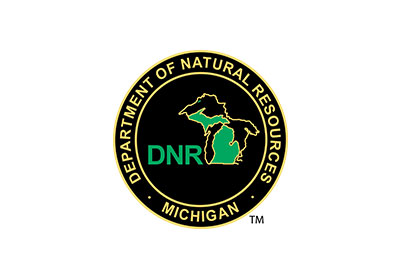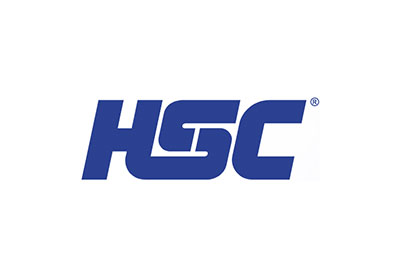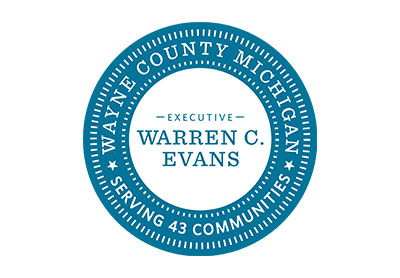Kids are a big market for brands big and small, from traditional to tech.
Brands naturally want a piece of the $21.1 billion in buying power that Gen We wields. PBteen wants to furnish their bedrooms, partnering with YouTube celeb Meg DeAngelis to inspire their inner-interior designer. Slammers wants to be in their lunchbox, wooing parents with the promise of functional food. And Staples wants in their backpacks and lockers, with smart supplies Designed by Students.
We get it. Gen We is 78 million strong and at least four young life stages deep. Brands want their attention and their loyalty. Win their hearts, win their (parents’) wallets for years to come.
But what business does a utility company, appliance maker or chemical manufacturer have with this under 20 crowd? Turns out, big business. Not the traditional gas, electric and pharma kind. Rather, the human resources kind. On a higher level still, the social marketing kind.
For their companies to prosper, they need talent. Not just any talent, STEM talent, people with skills in science, technology, engineering and math. And right now, STEM talent is in high demand and in short supply. (This is especially true of girls and women in STEM fields. More on that later.)
Since 2004, the number of STEM jobs in the U.S. has increased 16 percent to 16.5 million, according to GAO.gov. Think software developers, computer systems analysts, web developers, mechanical engineers, construction managers, accountants, mechanics, and school psychologists. By 2018, the U.S. Bureau of Labor and Statistics expects there will be 8.7 million more STEM jobs.
So, companies like Consumers Energy, Dow Chemical and General Electric are putting significant marketing and other resources behind fostering more STEM talent, funding school endeavors, extracurricular activities and ad campaigns to motivate interest.
Consumers Energy invites kids to explore their genius.
Earlier this year, Consumers Energy launched the Generation Genius Project to inspire students to pursue STEM fields. The campaign included a video and microsite backed by decades of volunteerism, leadership and financial support. Brogan worked with the utility’s marketing team and leadership to develop the campaign.
“We are excited by the opportunities created by robotics in schools to inspire students to learn and explore science, technology, engineering and math fields,” said Patti Poppe, Consumers Energy’s senior vice president of distribution operations, engineering and transmission in a recent press release. “That’s why we launched our new Generation Genius Project to make sure Michigan is first in the nation when it comes to developing young minds through science and robotics.”
Much of Consumers Energy’s work in STEM has involved FIRST Robotics, a national, nonprofit that encourages young people to be science and technology leaders. So, the Generation Genius assets are robotics-centric. FIRST is a big deal in STEM education, with robotics teams popping up across schools today like soccer teams in the 90s.
The Generation Genius Project video includes classroom experiments, physics projects, earth science and, of course, robotics. The video features actual middle school robotics teams in the thick of mock-competition, appealing to the ambitious, success-driven Gen We bent on discovery. The spot is also targeting Gen We’s mom, who worries about her daughter competing in an increasingly global market. Media plans focused largely on digital, inbound marketing and cable.
STEM ranks among Dow Chemical’s top initiatives.
Dow’s STEMtheGAP campaign involves a host of initiatives to advance STEM education, from training and funding to leadership and advocacy. Dow also sponsors You Be The Chemist, an interactive academic contest that encourages students in grades fifth-eighth to explore chemistry concepts and their real-world applications. The company’s overall STEM marketing efforts have involved public relations, community outreach, social media and internal communications.
“Dow has survived and thrived for more than a century because of the strength of our innovation engine, built on a foundation of STEM talent,” said Andrew N. Liveris, Dow’s chairman and chief executive officer in a recent press release. “Investing in the education of our youth means investing in our shared future and the future of our company. There is no better way to inspire children to pursue careers in STEM than through the hands-on project based learning experiences that FIRST provides.”
Thanks to General Electric, there’s an emoji for that.
GE’s #EmojiScience campaign makes chemistry, physics and other core science subjects more accessible to students with the help of five emoji-illustrated lesson plans. GE worked with The National Science Foundation and NBC Learn to create the plans for teachers to use for free.
The plans can be found at EmojiScience.com, which also houses an interactive emoji table of experiments and a video series featuring Bill Nye explaining science by using emoji. Illustrating that just about anything can be explained with the help of emoji, Nye’s bit on evolution has received nearly 1.5 million views to date. Clearly, GE’s speaking Gen We’s language. Emojically.
Girls go geek (please).
And then there’s the girl factor. Women have close to half of all jobs in the U.S., but less than a quarter of those jobs have been in science, technology, engineering or math. Women represent only about 14 percent of engineers and some 27 percent of all computer science jobs. This is both a problem, and an opportunity.
Verizon, in partnership with Makers, seized the moment last year with the “Inspire Her Mind” campaign. In the :60 second spot, we see curly haired toddler praised for her beauty by an adoring female voice. She grows up to be a curious little girl, sorting rocks, scrambling through a river bed, collecting sea creatures. As a tween, she skillfully creates a model of the solar system, teetering on her bed as she hangs it on the ceiling. She’s elbow to elbow with her teen brother in the garage, using power tools to assemble a rocket. All the while, a voiceover of mom and dad admonishes her curiosity, imploring her to act more like a girl. The end frame finds the tween staring at a science fair poster at school, using the reflection of the display case to apply lipstick.
The toy industry is also considering the possibilities. The Mega Bloks Barbie-branded line of construction toys and Lego Friends, market to women and girls by demonstrating that building blocks can be pastel-colored and smart. Still, old toy brands have been slow to break gender stereotypes. So innovative, progressive Millennial toymakers have taken to crowdfunding to produce STEM-oriented toys for girls.

The creators of GoldieBlox, a toy set that teaches girls engineering, initially used Kickstarter to garner funding and interest and raised more than $285,000. GoldieBlox can now be found on the shelves of some 6,000 stores. When Linkitz co-founder and MIT PhD Lyssa Neel wanted to produce the wearable tech toys that teach little girls how to code, she and her partners raised more than $100,000 via crowdfunding.
“My hope is to inspire the next generation of tech titans,” Neel said in a video posted on YouTube. “I want to see a girl lead a really great tech company. And say when I was a little girl I played with Linkitz and that’s what inspired me.”
STEM goes Hollywood.
Hollywood is also investing in STEM to reach younger audiences. More technical careers and concepts are being featured on television and film, and are going viral in high-profile social media memes, than in past years, notes CEB Iconoculture. Young consumers are tuning into reality-based science programming and science fiction, motivating media brands to devote more real estate and airtime to the multifaceted niche genre.
In the last two years, we’ve seen box office space dramas Interstellar, The Martian and Gravity. There’s no shortage of examples on TV—from Cosmos and The Big Bang Theory, to Bill Nye the Science Guy and Brain Games. Nickelodeon added another candidate to the fall lineup. Called Game Shakers, the tween sit-com casts middle schoolers as savvy scientists and video game designers. The American Association of University Women (AAUW) has been so impressed with the influx of STEM heroines that they crafted a list of their favorite stars, with Bones’ Temperance Brennan and NCIS’s Abby Sciuto making the cut.

You had me at 89 percent go on to college.
Brogan surveyed nearly 1,100 women earlier this year about STEM and robotics. We wanted to find out what women knew about efforts to encourage STEM in the classroom and their relative importance. The majority of the some 300 respondents were at least somewhat familiar with STEM promotions and robotics, and 67 percent said robotics were an important or very important program to prepare kids for STEM fields.
But the more facts they learned about robotics and STEM, the more impassioned they became. Moms are like that. They were particularly opinionated about the following:
FACT: High schoolers who participate in robotics have access to millions in scholarship funds for college and receive more favorable consideration by many colleges and universities. (97 percent would be more likely to advocate for robotics in schools if they knew this fact.)
FACT: In 2011, 26 million U.S. jobs required in-depth knowledge in at least one of the STEM fields. That’s 20 percent of the workforce. (91 percent would be more likely to advocate for robotics in schools if they knew this fact.)
FACT: 89 percent of robotics team alumni go on to college. (90 percent would be more likely to advocate for robotics in schools if they knew this fact.)
STEM is a perfect social marketing fit for Consumers Energy, Dow, GE. Here’s why.
Rather than bury core company values within internal plans, brands are broadcasting their beliefs in an effort to find common ground with increasingly discerning consumers. The intersection of personal consumer values and core brand values provides the ideal platform for effective social marketing campaigns.
Dow’s STEM strategy is a great example of where consumer values—education, creating economic prosperity for all—meets corporate values:
“Dow is an integral contributor to advancing interest in, access to, and quality of STEM education globally. STEM learning is an economic imperative. By focusing expertise and resources on STEM and related careers, Dow plays a vital role to increase the number of STEM professionals and educators globally.”
Dow can afford to have lofty goals, like impacting global economies. Companies don’t have to shoot quite so high to connect with consumers. But they do have to follow a few rules:
- Make sure it fits. For branded cause-driven campaigns to be effective, they must sync sensibly with a brand’s product line. When timely product promotion and corporate do-gooding logically intersect, marketing impact is inherently heightened.
- Make sure consumers care. Companies should select causes that their customers care about in a way that positively impacts sales.
- Watch your tone. The correct tone is critical. A brand with a silly sensibility that suddenly mounts a starkly serious cause-driven campaign only serves to undercut all the hard work they’ve spent on building a specific identity in the first place.
So, market on Consumers Energy, Dow Chemical, General Motors, Lego and Linkitz. Target our kids. Sell them on robotics, technology and STEM overall. We want to find you on their class schedules and in their toy boxes. You win. We win.
Interested in learning more about social marketing campaigns that motivate positive social change and spark positive brand awareness? Download our free whitepaper: “8 Strategies to motivate behavior change: social marketing the Brogan way.”























